Indoor air pollutants are a serious health threat in many homes. Invisible and often unthought of, these airborne toxins can impact your respiratory health and cause long-term problems if not addressed.
You may not think much about the air quality in your home but it’s probably much more toxic than you realize. According to the EPA, certain pollutants are found indoors at concentrations 2-5 times higher than outdoors. Overall air pollution is often 10 times (and even up to 100 times) worse indoors than outdoors.
Fortunately, there are steps you can take to clean up the air in your home, boosting your health in the process. But first, you need to know where these pollutants come from (plus their harmful effects) so you can start getting rid of them.
Common Health Effects of Indoor Air Pollution
If you think about how much time you spend at home (even just sleeping), it’s clear that toxic air is going to have an effect on your health at some point. Before we get into the most common pollutants, here’s a look at the effects chemical-filled air can have on you.
Short-Term Effects
Immediate effects of indoor air toxins are usually centered around your respiratory system.
Coughing, irritated throat, watery/itchy eyes, nasal congestion, sneezing, fatigue, and dizziness are all possible symptoms of indoor air pollutants. Sometimes, these symptoms will be put down as a cold or general allergies with the real cause remaining hidden.
Children and those with asthma or another preexisting condition are more at risk for experiencing short-term effects. If you’re sensitive to a certain chemical pollutant, you may also experience a more severe reaction than others in your household.
Long-Term Effects
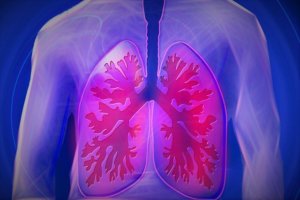
The long-term effects of breathing in toxic air may surprise you.
Respiratory issues are one of the most obvious examples. Asthma, allergies, and other breathing challenges can all develop as a result of repeated exposure to air pollution.
Your risk of developing other serious conditions also goes up. This includes heart disease, cancer, liver damage, kidney damage, hormone disruption, and more.
For children, the impact can be especially severe. Though not confirmed yet, the development of multiple chemical sensitivity (also called multiple allergy syndrome) and disorders on the autism spectrum in children are linked in part to indoor environmental chemicals.
Cleaning up the air in your home is truly one of the best things you can do for yourself and your family!
Top 13 Indoor Air Pollutants
VOCs
Volatile organic compounds (VOCs for short) are some of the most common chemicals you’ll find lurking in the air of your home.
The definition of a VOC is a chemical that is emitted as a gas from a solid or liquid substance. They come from a large number of sources, including many very common household products. Mattresses, carpeting, cleaning products, furniture, and paint are all prime examples of VOC emitters.
One of the biggest problems with VOCs is that they are easily inhalable. In fact, if you’re familiar that “new car smell” or the smell of a freshly painted room, you’ve already breathed VOCs into your lungs.
Among other issues, VOCs can cause chronic respiratory conditions, headaches, liver or kidney damage, throat irritation, and a higher cancer risk.
Formaldehyde
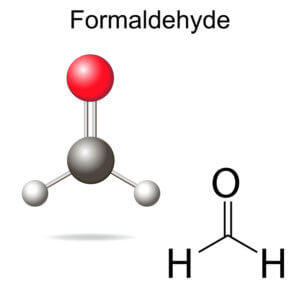
Formaldehyde is not a chemical you want to breathe in. To start with, it’s a carcinogen, which means it may increase your risk of cancer if you are exposed to enough of it. Formaldehyde can also cause irritation to your skin, nose, throat, and eyes.
Unfortunately, formaldehyde is still a chemical widely used in manufacturing and easily off-gasses into the air of your home.
The most common source of it in homes is from the resinous glue of composite woods products, including cabinets. Formaldehyde also does not dissipate quickly and can still be present in your home years after the installation of the original source.
Lead
Lead is often thought of mainly as a water toxin, but it also belongs on the list of dangerous indoor air pollutants. It was widely used to make several different types of products before anyone realized how dangerous it was.
Lead-based paint remains the biggest source of exposure inside homes. It was banned in 1978 in the U.S. but remains present in millions of older homes. When this type of paint starts to deteriorate, the lead is released into indoor air.
Another overlooked source of lead in homes is from contaminated soil that gets brought indoors on shoes. This, plus lead from paint, can form a toxic lead dust that is easy to inhale.
Harmful health effects of lead exposure include kidney damage, brain damage, neurological symptoms, and developmental problems.
Dust Mites
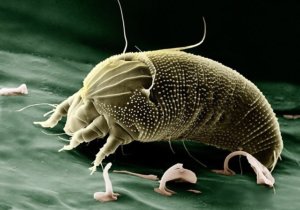
Dust mites are microscopic indoor pests that hide out in about four of every five homes in the U.S. They don’t bite humans but are one of the biggest triggers of allergies and asthma in people who are sensitive.
These very tiny mites feed on dead human skin cells in dust. This means that they tend to congregate on furniture, bedding, and other areas that dust sticks to. And while you won’t ever see them, cleaning dust mites out of your home is key to breathing easier.
Pollen and Other Allergens
Pollen is commonly classified as an outdoor irritant but can easily sneak inside and become one of the most aggravating indoor air pollutants. Those with pollen allergies know the agony of sneezing, wheezing, itching, etc. that comes with the bloom of certain flowers.
One of the biggest problems with pollen indoors is that it gets trapped. Outdoors, it will eventually wash or blow away. Indoors, however, it has no place to go and can continue to cause respiratory problems through allergy season and beyond.
Pet dander is another common allergen that builds up indoors and can cause serious aggravation if you’re allergic.
Moisture and Mold
High levels of moisture indoors and the appearance of mold go hand in hand. While you want a certain level of humidity inside your home, too much of it or water leaking in is a recipe for respiratory distress.
In damp conditions, mold easily finds a home on many common materials: ceiling tiles, wood products, wallpaper, insulation, carpeting, etc.
Mold isn’t particularly healthy for anyone but is especially troublesome for those who are allergic or have existing respiratory problems. Common symptoms of exposure include coughing, wheezing, sneezing, itchy eyes or skin, and even fever. It also may contribute to the development of asthma in children.
Toxic Dust
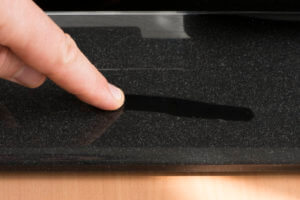
Dust is mostly viewed as an annoying substance that has to be cleaned every so often. However, it’s much more harmful than you might think because it represents an accumulation of many harmful indoor air pollutants.
For example, it can contain PFAS (also known as forever chemicals) from plastic and PDBEs (potential carcinogens) from flame retardants found in furniture and bedding. Extremely tiny particles, called particulate matter, from printers and other electronics also end up in dust and can be very harmful when inhaled.
The end result is a chemical-laden substance that can cause hormone problems, contribute to cancer, induce respiratory problems, and more.
Bacteria and Viruses
Certain types of bacteria, fungi, and viruses can be airborne and enter the atmosphere of your home. They can cause problems ranging from acute infection to breathing difficulties and allergies.
Some will be more prevalent at certain times of the year and each have their preferred conditions. For example, the influenza virus typically appears in fall and winter and survives the best in conditions with low humidity.
Getting these pathogens out of the air in your home is essential to staying healthy.
Fragrances

Fragrance can be one of the most toxic ingredients in cosmetics and personal care products. It can also easily end up in the air of your home from candles, air fresheners, and other scented products.
In fact, synthetic fragrances can be one of the biggest causes of respiratory issues in the home. They are made up of an undisclosed number of chemicals, many of which can have toxic effects on your lungs and overall health.
Some contain formaldehyde and other carcinogenic chemicals. Most of them release VOCs and react with ozone to create secondary pollutants that can cause harm to your lungs, alter hormones, and damage your central nervous system. Definitely not what you want floating around your home.
Smoke
Smoke can be one of the most harmful indoor air pollutants. It ends up in the air from cigarettes, cigars, pipes, and other tobacco products. Even living next to someone who smokes means that it can drift into your own home through windows and doors.
Exposure to secondhand smoke can be very damaging to the lungs, particularly for asthma sufferers. It’s also filled with more than 7000 chemicals, a good number of which are known carcinogens.
At the extreme end of the spectrum, continued exposure to secondhand smoke can cause heart disease, stroke, and death.
Cleaning Chemicals
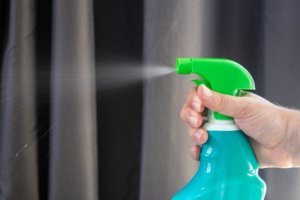
Common household cleaners contain some of the most damaging chemicals for your health. They are particularly dangerous when inhaled, causing respiratory distress, aggravating asthma, and contributing to lung function decline in those who clean regularly.
These chemicals can also stick around as VOCs, especially those that are sprayed on.
Pesticides
You may associate pesticides mainly with garden or farm use, but they are also commonly used around the home. Products that keep out unwanted insects, rodents, and pathogens are all considered pesticides. Lawn and garden products can also find their way inside by way of the wind or attached to shoes.
There are many dangers of pesticides, including serious problems like respiratory conditions, nervous system damage, and increased cancer risk.
Byproducts of Cooking & Heating
Certain types of heating and combustion appliances (gas stoves, wood burners, fireplaces, space heaters) can produce dangerous airborne toxins if not properly vented. This includes particulate matter, which is easily inhaled and can affect your heart and lungs, and nitrogen dioxide, which also causes respiratory damage.
Venting these heat sources correctly is key to avoiding these chemicals.
Getting Rid of Indoor Air Pollutants
Now that you know what may actually be lurking in the air you breathe at home, what can you do about it?
There are a few very important steps you can take to drastically improve indoor air. It usually takes a multi-step approach to truly clean up toxic air, so be sure to consider each one.
Ventilation is Key
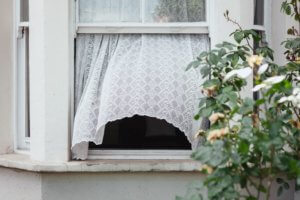
Ventilating your home regularly is key to getting toxic pollutants out. Stale air just leads to a buildup of more and more chemicals, which will cause more damage to your health long-term.
Opening your windows often is the best way to do this. Air conditioners and heating systems typically only recycle indoor air, so they won’t do much for refreshing your indoor atmosphere. You really need to open your home up frequently to “clear the air”.
If pollen and outdoor allergens are a problem for you, there may be certain times of the year you don’t want to open the windows- in which case there are some other options (see below).
Reduce Toxic Sources
Ventilation can help to clear out your home immediately, but reducing the amount of toxins being emitted is necessary for cleaner air long-term.
Start with the most easily changeable items: toxic cleaning products, anything with synthetic fragrance, pesticides, etc. Check for lead paint and any sources of formaldehyde. Later, you can move on to bigger projects like getting a non-toxic mattress, low VOC carpeting, and furniture without flame retardants.
Utilize a Quality Air Purifier
While you work on cutting down on indoor air pollutants, utilizing a high quality air purifier can be a huge health booster. Good air purifiers are designed specifically to pull air in and filter out toxins so that you’re breathing clean air again.
If you don’t often open your windows or suffer from respiratory troubles, an air purifier is really a must, but it’s also good to use one alongside frequent ventilation, since it’s a more targeted approach.
HEPA filters (short for high efficiency particulate air) have become something of a gold standard and are very effective at removing toxins that are around 0.3 microns in diameter.
However, some bacteria, viruses, and other toxins are smaller than this and may not be trapped. But there are some new air purifiers designed to be even more effective…
Recommended: AirDoctor, The New Standard in Air Purifying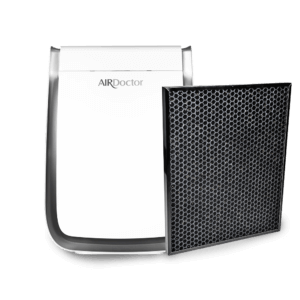
To drastically cut down on indoor air pollution and the damage it can cause to your health, AirDoctor is a breakthrough air purifier that removes virtually 100% of airborne particle pollution and the majority of VOCs.
After extensive research, it is the air purifier I chose and use in my own home.
Air Doctor has been independently tested and found to remove particles as small as 0.003 microns in diameter as well as 99.99% of tested bacteria and viruses. This is because of its revolutionary UltraHEPA filter that is 100 times more effective than standard HEPA filters.
AirDoctor also uses unique WhisperJet fans and a 100% sealed system to filter air at high speeds with no leaks, all without disturbing the peace and quiet of your home.
It comes in three sizes that work effectively for different size rooms.
Click here to check out the AirDoctor
Remember, while a top-quality air purifier such as the Air Doctor may be the “ultimate” step, every step you take — reducing the sources of air toxins, ventilating your home, even having live plants in your home — may seem small but it can go a long way toward helping you!

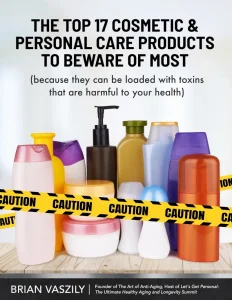
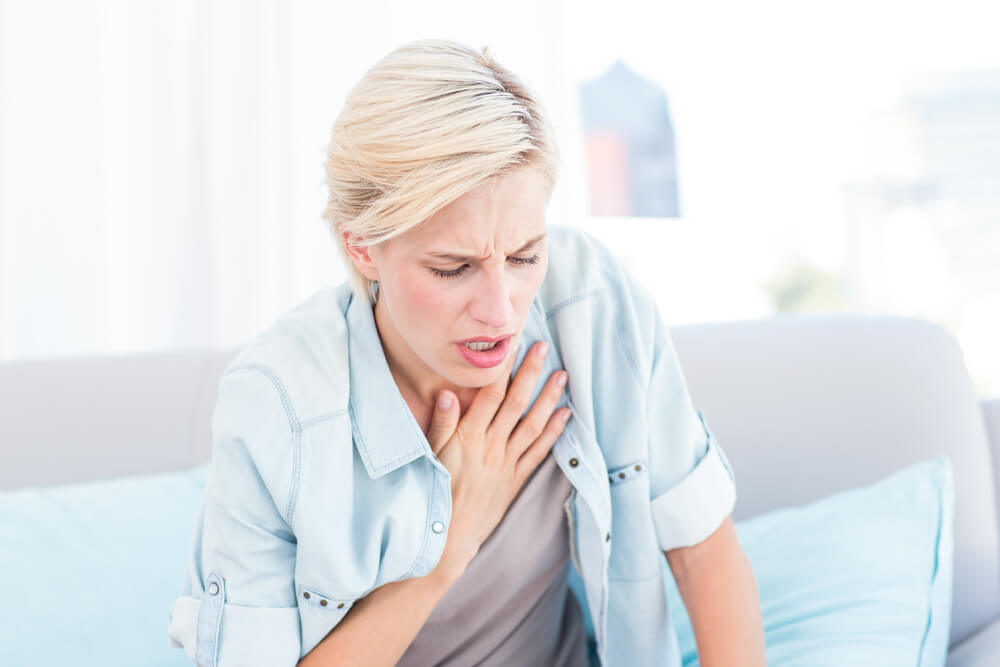
I live in a four room apartment and I do have carpeting and wood cabinets and other toxins. Thank you for suggesting Air Doctor air purifier . I will have to check them out further.
very interesting
Hello Mr. Brian Vasily,
Thank you for writing about the detrimental health effects with toxic chemicals .
The misconception of scent = clean and the branding (brainwashing) with commercials is a big part of SBS – Sick Building Syndrome and Global Warming, naturally causing all organ failures, cancer and neurology problems.
Laundry products are the Biggest culprit. More than transportation emissions.
Thanks again for your article. Kindly consider more on this topic, specifically laundry products.
Note: “Safer Choice” labels on products that contain less chemicals and approved by EPA.
With gratitude and appreciation.
Respectfully,
Carol
Carol, I use Truly Free as well as Branch Basics for laundry as well as cleaning products.
Very helpful, thank you.
We have salt lamps in all of our rooms.
They help to clean the air.
Can you share more about what a SALT LAMP is? And how it is used?? And where to get a good one if it is helpful – ? Thankyou~~ Adrian
Thank you for some great information, though I am really surprised to see no mention of the other obvious approach to air cleaning the home… did I miss it somewhere? Plants! Nature gives us everything we need. More friendly for the environment not using electricity constantly, expensive outlay and ongoing cost to the hip pocket. You can source plants for free. Obviously, you need to source good clean soil and natural plant food/care products too which doesn’t need to be expensive. 😊🪴
Which plants – can you share more how I can do this primarily for my bedroom – I’ve investigated other reasons and find that I sometimes get headaches after going to sleep – which plants can help? Thank you~
Adrian, if you look up online air purification plants it gives you list of plants to choose from.
Hi there, that’s true! What plants do you know to help? I only know the mother in laws tongue snd a type of a small palm tree
I use water and vinegar mix in each room and change weekly or bi-weekly.
Lavender essential oil is my favourite ghost busting oil, just a drop here and there on a clean damp cloth after a good clean moving over surfaces always brightens the space. (frankincense /myrrh / clove /rosemary / thyme/ oregano/ etc) there are an infinite choice of which oil to use (provided they are pure and genuine oils) as natures oils are powerful but whichever you love the scent of and lifts your mood is the best indicator. Also add some to your mop water.
Great way to purify the home with these essential oils. I use these for a cleaner fresher home I would add tea tree, lemon, and eucalyptus .
thanks so much. the article is very helpful
Great information Brian. I don’t think the manufacturers of all these toxic cleaning products realise the harm they’re doing. They’re literally being paid to rob people of their health. I use basic household ingredients to clean my entire house. Vinegar, bicarbonate of soda, lemons and essential oils. I keep my hard earned cash and preserve my health.
Best wishes
Kameela